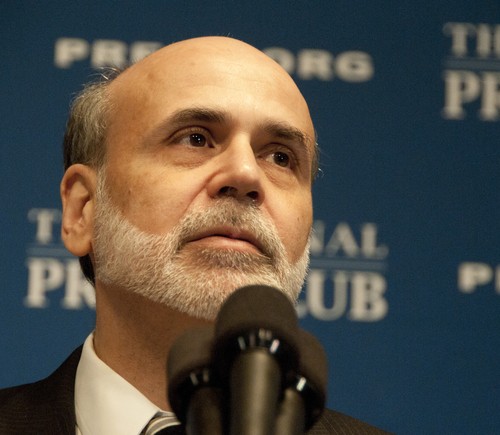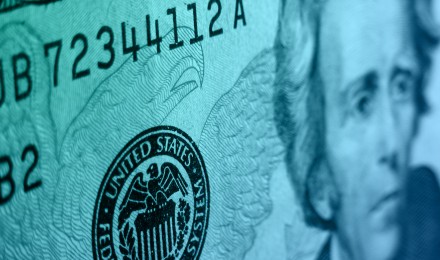The disappointing pace of expansion in the economy has the Fed intent on continuing its aggressive action. The Fed announced after the Federal Open Market Committee meeting that the buying program called Operation Twist, which expires at the end of the year, will be replaced with another program. The new Federal Reserve program, frequently referred to as QE3, will cause the Fed to buy more bonds at the same volume as the earlier bond-buying programs.
Since Operation Twist began, the Fed has bought $45 billion of long-term Treasuries each month with the proceeds received from the repayment of principal from short-term securities that reach maturity. In mid-September, the Fed started buying $40 billion a month in mortgage-backed securities (MBS), which bring the combine amount of the bond buying programs to $85 billion a month.
The policymakers set a numerical target for its monetary policies. Analysts did not expect to see this information until sometime in 2013. The Fed decided that as long as the unemployment rate exceeds 6.5 percent, it will continue to keep the Fed Fund interest rate near zero. The Fed Fund rate refers to the interest rate banks charge other banks for loaning overnight funds for mandated reserves. The bankers cut the overnight rates to almost zero in December 2008.
Economy Needs Fed Support
In its press release, the Committee expressed concern that the economy grow fast enough to make an impact on the unemployment rate without adequate monetary policies to support and sustain growth. The recent Job Situation report shows the unemployment rate declined to 7.7 percent in November compared to 7.9 percent in October.
The drop in the unemployment rate had more to do with workers who have stopped looking for jobs and left the workforce. The current inflation rate falls below the two percent benchmark. The Fed anticipates that the inflation rate for the next 12 to 24 months will not to exceed 2.5 percent and for long-term inflation to remain under control.
To fund it expansion of the latest round of bonding buying the Fed plans to print new money. Since 2008, the Fed has purchase nearly $2.4 trillion in bonds. The purpose being to push keep interest rates lower and support a vibrant economic recovery. Many critics of continual Fed intervention in the economy points to the frigid economic growth, which scored a 2.7 percent annual rate for Q3 2012.
Fiscal Cliff Affects Business Confidence
A sustainable annual rate of expansion needs to be at 3 percent, according to most economists. Reuters report even weaker economic growth in the GDP in Q4 2012. For several quarters, businesses have kept a lid on capital investments and hiring new workers because of the uncertain resolution of the fiscal cliff problem. Unless, Congress and the White House reach a solution before the end of the year, $600 billion in federal spending cut will automatically take effect at the start of 2013. In addition, various tax cuts will expire, virtually raising taxes on individuals and businesses overnight.
The disappointing pace of expansion in the economy has the Fed intent on continuing its aggressive action. The Fed announced after the Federal Open Market Committee meeting that the buying program called Operation Twist, which expires at the end of the year, will be replaced with another program. The new Federal Reserve program, frequently referred to as QE3, will cause the Fed to buy more bonds at the same volume as the earlier bond-buying programs.
Since Operation Twist began, the Fed has bought $45 billion of long-term Treasuries each month with the proceeds received from the repayment of principal from short-term securities that reach maturity. In mid-September, the Fed started buying $40 billion a month in mortgage-backed securities (MBS), which bring the combine amount of the bond buying programs to $85 billion a month.
The policymakers set a numerical target for its monetary policies. Analysts did not expect to see this information until sometime in 2013. The Fed decided that as long as the unemployment rate exceeds 6.5 percent, it will continue to keep the Fed Fund interest rate near zero. The Fed Fund rate refers to the interest rate banks charge other banks for loaning overnight funds for mandated reserves. The bankers cut the overnight rates to almost zero in December 2008.
Economy Needs Fed Support
In its press release, the Committee expressed concern that the economy grow fast enough to make an impact on the unemployment rate without adequate monetary policies to support and sustain growth. The recent Job Situation report shows the unemployment rate declined to 7.7 percent in November compared to 7.9 percent in October.
The drop in the unemployment rate had more to do with workers who have stopped looking for jobs and left the workforce. The current inflation rate falls below the two percent benchmark. The Fed anticipates that the inflation rate for the next 12 to 24 months will not to exceed 2.5 percent and for long-term inflation to remain under control.
To fund it expansion of the latest round of bonding buying the Fed plans to print new money. Since 2008, the Fed has purchase nearly $2.4 trillion in bonds. The purpose being to push keep interest rates lower and support a vibrant economic recovery. Many critics of continual Fed intervention in the economy points to the frigid economic growth, which scored a 2.7 percent annual rate for Q3 2012.
Fiscal Cliff Affects Business Confidence
A sustainable annual rate of expansion needs to be at 3 percent, according to most economists. Reuters report even weaker economic growth in the GDP in Q4 2012. For several quarters, businesses have kept a lid on capital investments and hiring new workers because of the uncertain resolution of the fiscal cliff problem. Unless, Congress and the White House reach a solution before the end of the year, $600 billion in federal spending cut will automatically take effect at the start of 2013. In addition, various tax cuts will expire, virtually raising taxes on individuals and businesses overnight.







